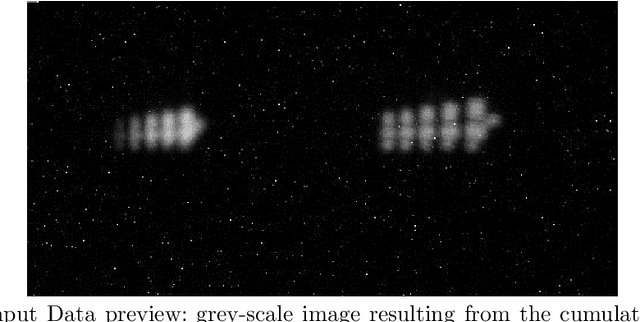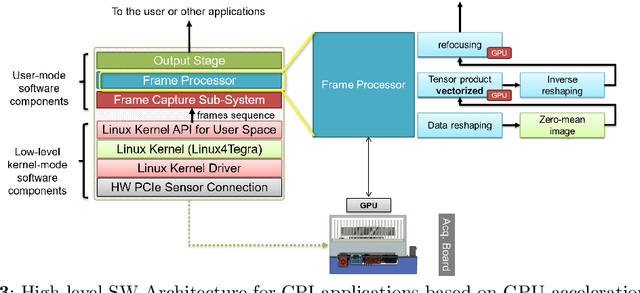Gianlorenzo Massaro
GPU-based data processing for speeding-up correlation plenoptic imaging
Jul 30, 2024



Abstract:Correlation Plenoptic Imaging (CPI) is a novel technological imaging modality enabling to overcome drawbacks of standard plenoptic devices, while preserving their advantages. However, a major challenge in view of real-time application of CPI is related with the relevant amount of required frames and the consequent computational-intensive processing algorithm. In this work, we describe the design and implementation of an optimized processing algorithm that is portable to an efficient computational environment and exploits the highly parallel algorithm offered by GPUs. Improvements by a factor ranging from 20x, for correlation measurement, to 500x, for refocusing, are demonstrated. Exploration of the relation between the improvement in performance achieved and actual GPU capabilities, also indicates the feasibility of near-real time processing capability, opening up to the potential use of CPI for practical real-time application.
Assessing the 3D resolution of refocused correlation plenoptic images using a general-purpose image quality estimator
Jun 19, 2024Abstract:Correlation plenoptic imaging (CPI) is emerging as a promising approach to light-field imaging (LFI), a technique enabling simultaneous measurement of light intensity distribution and propagation direction from a scene. LFI allows single-shot 3D sampling, offering fast 3D reconstruction for a wide range of applications. However, the array of micro-lenses typically used in LFI to obtain 3D information limits image resolution, which rapidly declines with enhanced volumetric reconstruction capabilities. CPI addresses this limitation by decoupling light-field information measurement using two photodetectors with spatial resolution, eliminating the need for micro-lenses. 3D information is encoded in a four-dimensional correlation function, which is decoded in post-processing to reconstruct images without the resolution loss seen in conventional LFI. This paper evaluates the tomographic performance of CPI, demonstrating that the refocusing reconstruction method provides axial sectioning capabilities comparable to conventional imaging systems. A general-purpose analytical approach based on image fidelity is proposed to quantitatively study axial and lateral resolution. This analysis fully characterizes the volumetric resolution of any CPI architecture, offering a comprehensive evaluation of its imaging performance.
 Add to Chrome
Add to Chrome Add to Firefox
Add to Firefox Add to Edge
Add to Edge